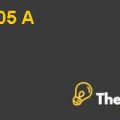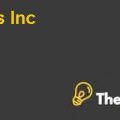KTM - VENTURE CAPITALIST EXIT
Introduction
The report presents a case about KTM, one of the largest producer and designer of reliable and high-quality motorcycles in Austria, which is considering to re-purchase their equity stake from BC and to incorporate a suitable finance strategy to expand its operations. The report contains a detailed analysis of the capital structure of the company, different modes of financing options available to the company to execute the strategy and the valuation of KTM using different valuation techniques.
Problem Statement
The management of the company is concerned about the adoption of suitable financing strategies to raise sufficient funds in order to re-purchase the shareholding of BC and to develop a suitable growth strategy to expand its operations. Further, the management is also concerned about the actual valuation of the company.
Valuation of KTM using different valuation techniques
KTM is considering to re-purchase the stake from BC, hence an appropriate valuation of KTM is important, so that the management has an enough idea of the total worth of KTM and to estimate the worth of the BC’s share. Different valuation techniques have been adopted to determine the value of the KTM. The results of the different valuation techniques include the following:
KTM – Venture Capitalist Exit Harvard Case Solution & Analysis
- Discounted Cash Flow (DCF)
Discounted cash flow analysis is a common method for the valuation of an enterprise’s worth. In a discounted cash flow method, the free cash flows are discounted back to its present value in order to eliminate the effect of time on value of money. The result of DCF analysis in Appendices 1 shows that the company has free cash flows of €530.24 million and when these free cash flows are discounted back at the company’s weighted average cost of capital, it shows that the company has an equity value of €260.57 million.
Different assumptions have been carried out in Appendices 1 and Appendices 4 for calculating DCF and Weighted Average Cost of Capital (WACC). Our analysis in Appendices 4, based on different assumptions shows that the company has a WACC of 5.21%. Further deductions from the analysis are as follows:
- The sales are expected to grow by 5.3% for next four years and will remain same for the following year, it is assumed that the sales grow as global demand for motorcycles grows.
- EBIT grows at an average of 6 to 8 percent for the three years and an average of 4 to 6 percent for the following two years.
- Depreciation increases as a percentage of sales.
- R & D costs are assumed as revenue expenditure.
- Working capital changes as a percentage of sales.
- Perpetuity growth is assumed as an average of expected growth of one to two percent.
- Beta is considered as a average of industry.
- Risk free rates are assumed as rate on 10 years Government bonds.
- Risk premium is adopted as an average of historic market premium.
- Book value of debt and equity has been adopted in WACC calculation.
- Tax rate is assumed as an average of prior years...........................
This is just a sample partical work. Please place the order on the website to get your own originally done case solution.













